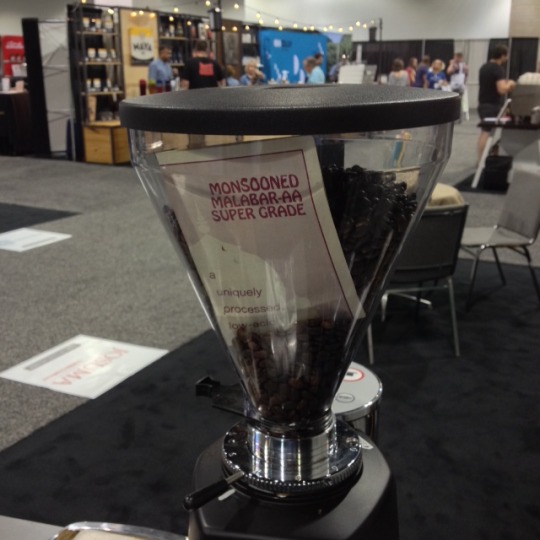#monsoonedmalabar
Photo

Doing an ayurvedic treatment during monsoon will help our body to respond better.
0 notes
Photo

Monsooned Malabar. Roasted by @mikeeye63. #coffee #monsoonedmalabar http://ift.tt/2G2IuZ2
0 notes
Text
An Espresso Blending Exercise at Coffee Fest Denver

When we exhibit at food and coffee shows, the espresso we typically serve will be a Malabar-based blend (i.e. Monsooned Malabar, plus other beans). At Coffee Fest Denver, however, we dedicated the last day of the show to serving Monsooned Malabar-AA Super Grade as a stand-alone bean. We launched our version of Single Origin Sunday after seeing the response one legendary Seattle roaster got when he served Monsooned Malabar as a single origin espresso during this year’s SCA Expo.
For roasters that visited the booth, this gave them the rare opportunity to taste Monsooned Malabar-AA Super Grade in its purest form. We also walked each roaster through the following Iterative Espresso Blending Exercise.
Step #1: Taste the Espresso. Ask Yourself If You Like the “Salted Caramel” Flavor?
If NO, then there’s nothing further to be done. This isn’t the bean for you or your customers.
If an UNQUALIFIED YES, then roasting and offering Super Grade Monsooned Malabar as a single origin espresso may be the obvious next step.
If a QUALIFIED YES, the proceed to Step #2.
Step #2: Select ONE Flavor Note that Would Improve the Espresso.
Some roasters suggested adding a Berry note. Others offered Nut or Chocolate. A few thought that the espresso could benefit from the inclusion of Citrus notes. In each case, we asked the roaster to identify the origin whose bean would likely provide the suggested flavor note. The answer, which in most cases, was easy to name would be the obvious companion to Monsooned Malabar Super Grade in a two-bean espresso blend.
Step #3: Roast and Create Two Espresso Test Blends.
Roasters left our booth with the following take-home project. First, roast both Monsooned Malabar and the second bean. Then try them in a few two-bean espresso test blends.
We suggested that Test Blend #1 be two-thirds Monsooned Malabar (and one-third the other bean) and that Test Blend #2 be the opposite (i.e. one-third Monsooned Malabar and two thirds the other bean).
Step 4: Taste Each Blend. Iterate Further.
The final step is to taste each blend and decide which of the two blends tastes best. If you prefer something that’s lighter than Test Blend #1 but heavier than Test Blend #2, try again with a 50/50 blend.
By repeating this part of the exercise, a roaster should be able to settle on an espresso blend recipe.
Interested in learning more about espresso blending? Visit the Espresso Blending section of our website.
0 notes
Photo

Doing an ayurvedic treatment during monsoon will help our body to respond better.
0 notes